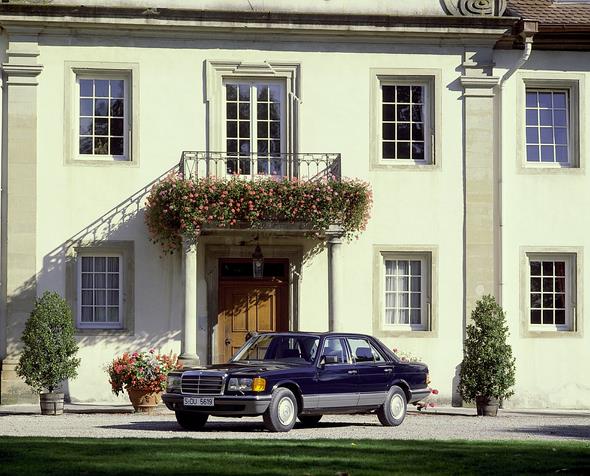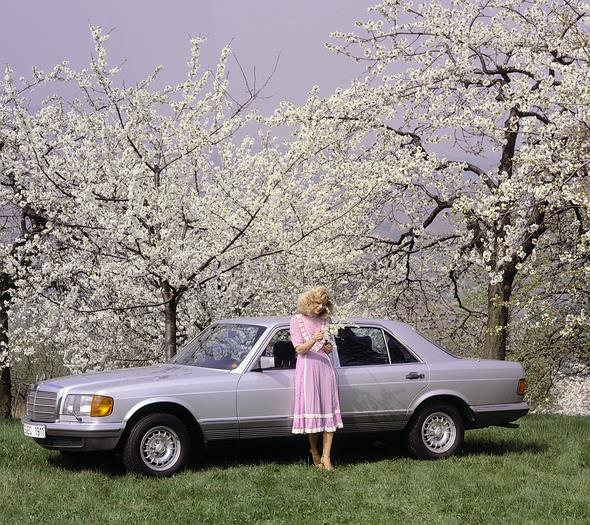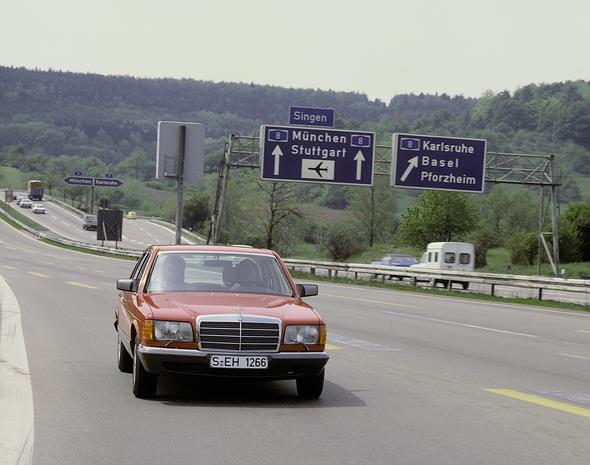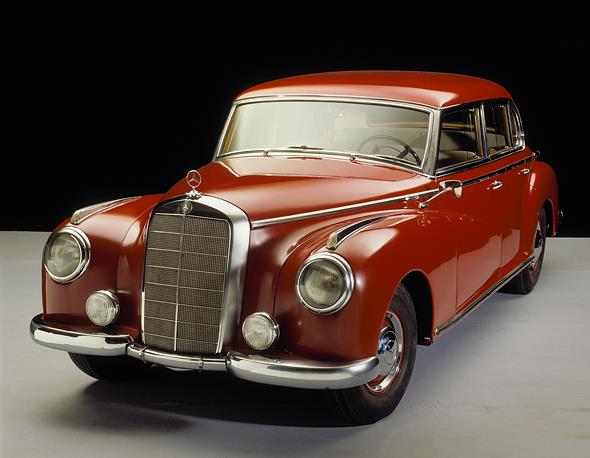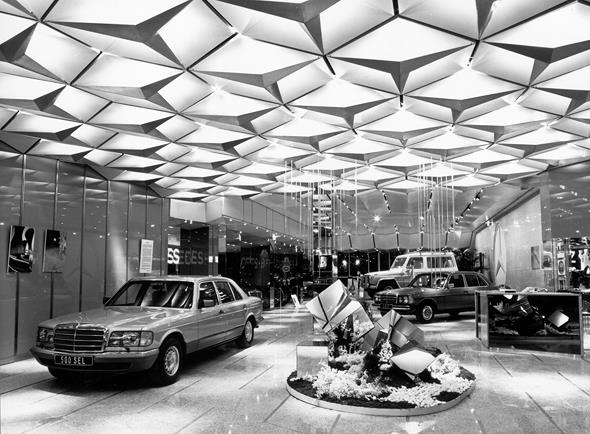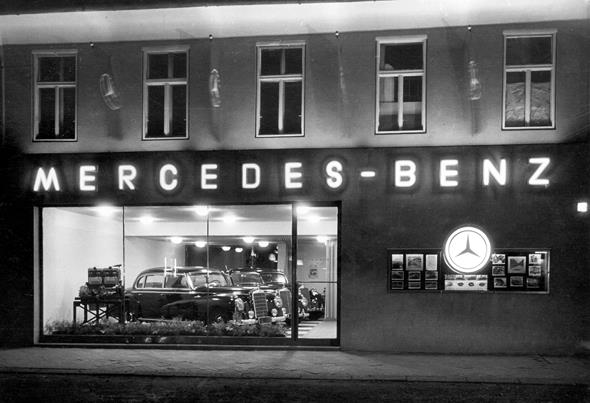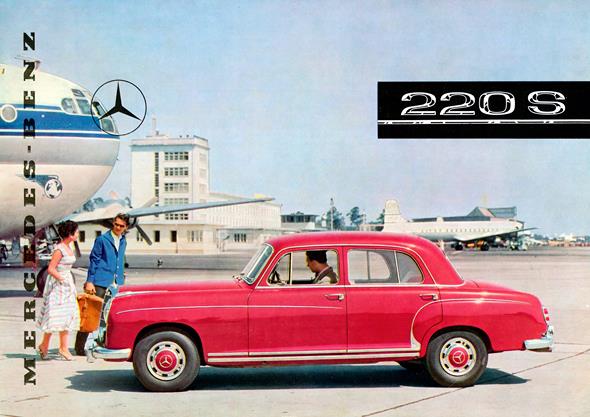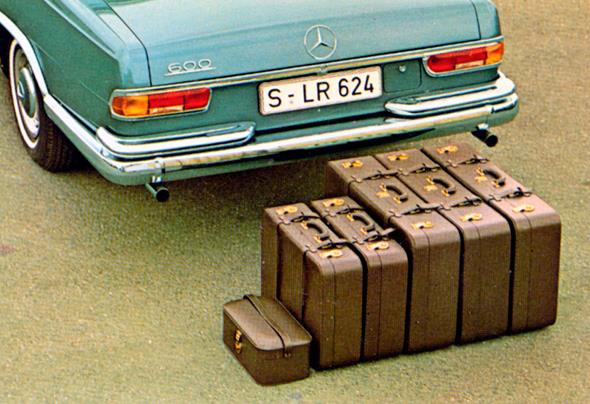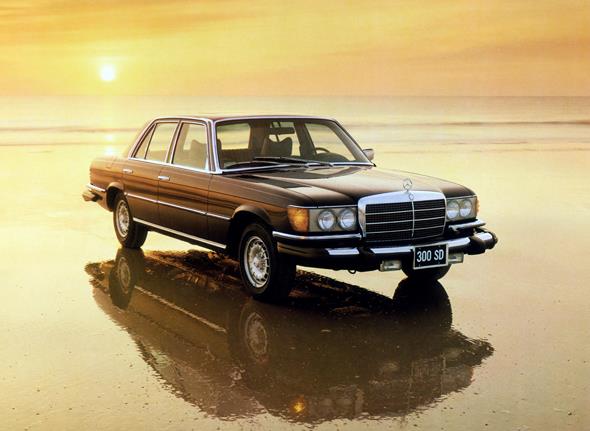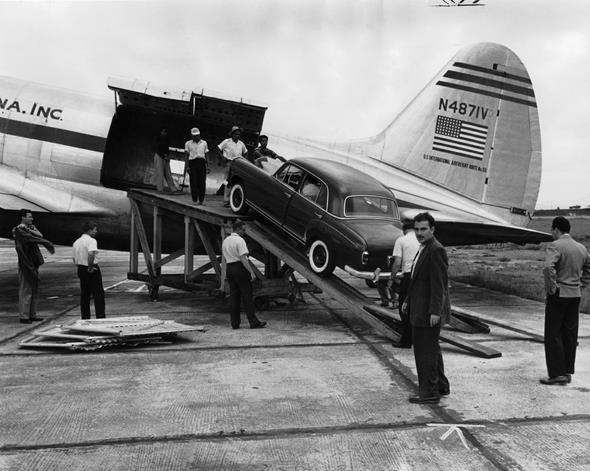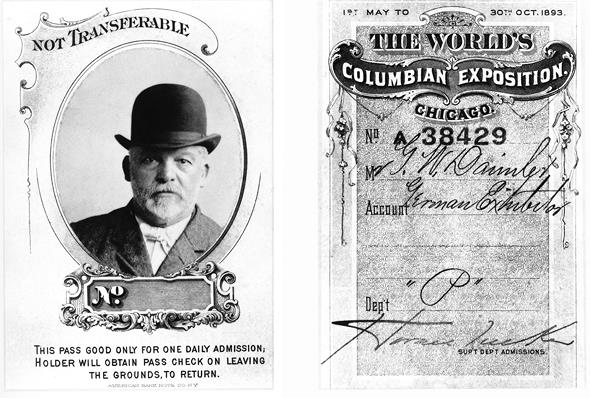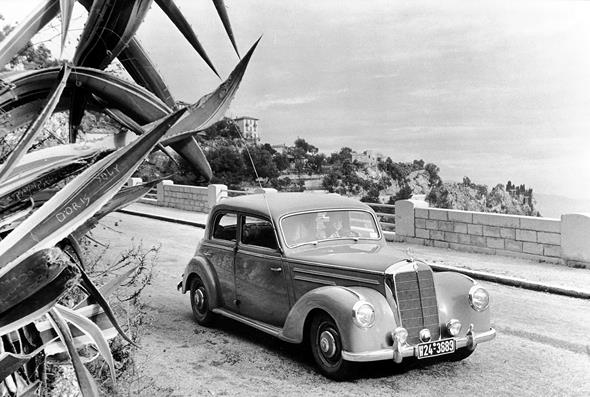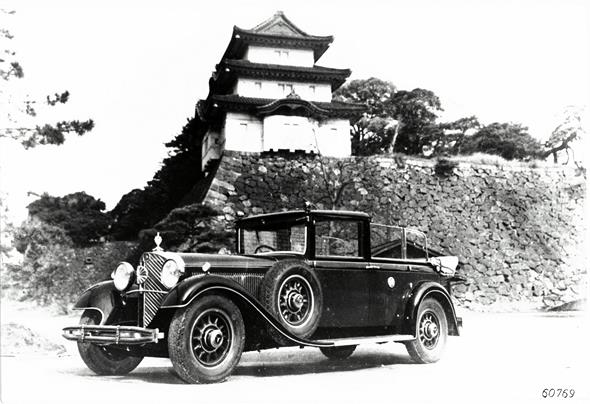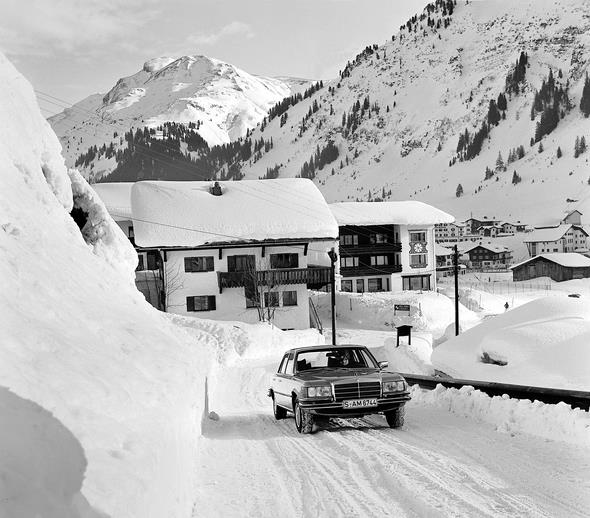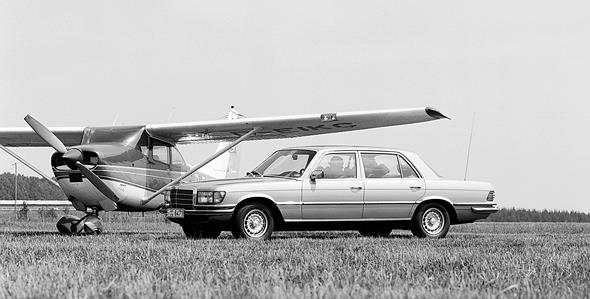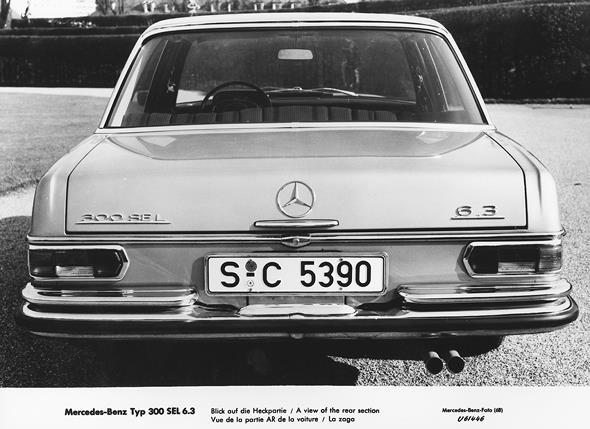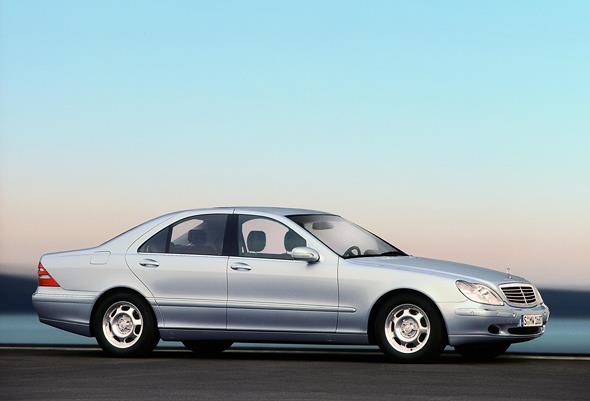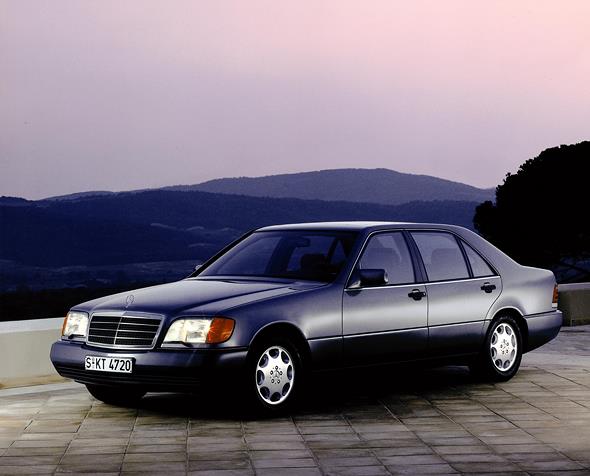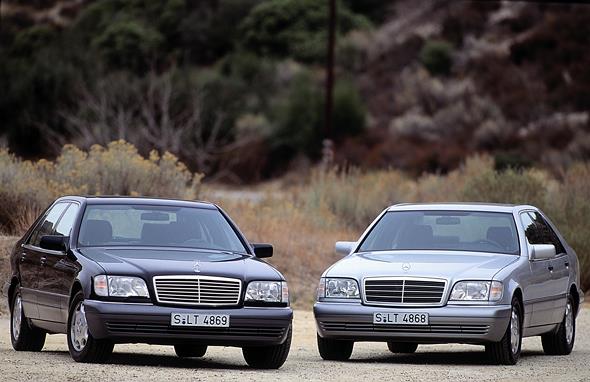

- The international success of Mercedes-Benz is also reflected in the history of the S-Class
- Each generation of the S-Class has shaped its respective era with innovations from the cutting-edge research of Mercedes-Benz
Stuttgart – The premium and luxury class Mercedes-Benz vehicles of the S-Class represent the values of the Stuttgart-based brand like no other model series family. The economic success of Mercedes-Benz throughout the world is also reflected in the exclusive chronology of the S-Class, whose traditions date back to the early days of the automobile. The economic history of the S-Class is made up of a variety of individual elements – the following examples represent a selection of these elements.
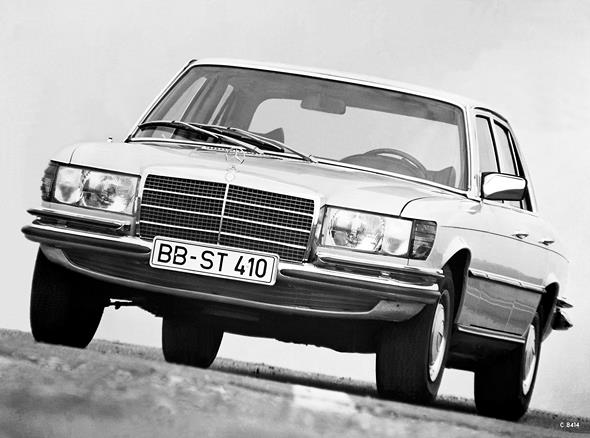
The global star: today more than 90 per cent of all S-Class vehicles are exported. Such international demand boasts a long tradition, and is also attributable to a global dealer network which has been built up since the early 20th century. Since the 1950s, at least half of these premium-class cars from Stuttgart have been consistently sold abroad. In around 1960, the proportion sold overseas was already a good 70 per cent, with more than 20 per cent of production heading to North America.
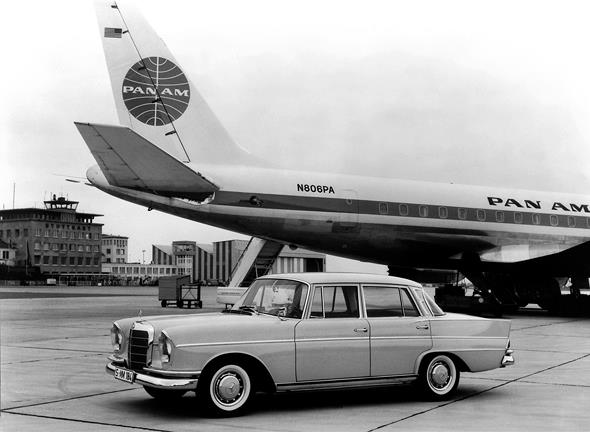
The USA has also been a significant market in the prestige vehicle segment: Mercedes-Benz sold around 35 per cent of the 600 model (W 100) there. In this respect, new markets have repeatedly made a contribution to reinforcing the international success of the S-Class. As a result, China is currently the most important market for the premium- and luxury-class vehicles of Mercedes-Benz.
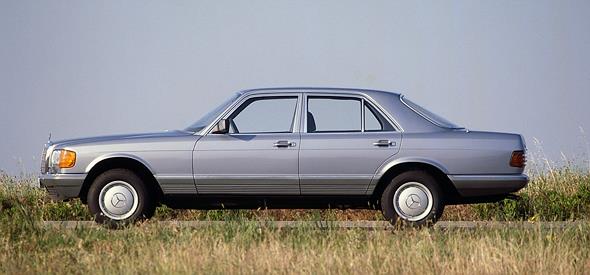
The S-Class mirrors the German mark: from 1948 to 2001, the German mark (DM) was the official currency of the Federal Republic of Germany. The first prestige saloon among the direct forerunners to the S-Class after monetary union, the Mercedes-Benz 300 of 1951 (W 186), was priced at DM17,600 at the time of its market launch – without tyres, which cost extra.
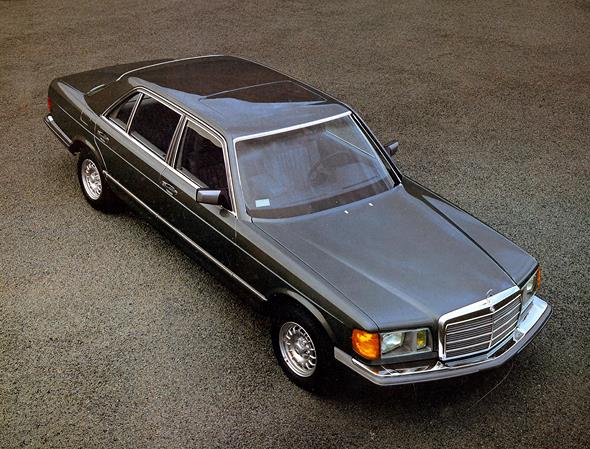
The last S-Class of the German mark era was the 220 model series presented in 1998. At the time of the changeover to the Euro in January 2002, the flagship Mercedes-Benz S 600 long version cost almost DM225,000.
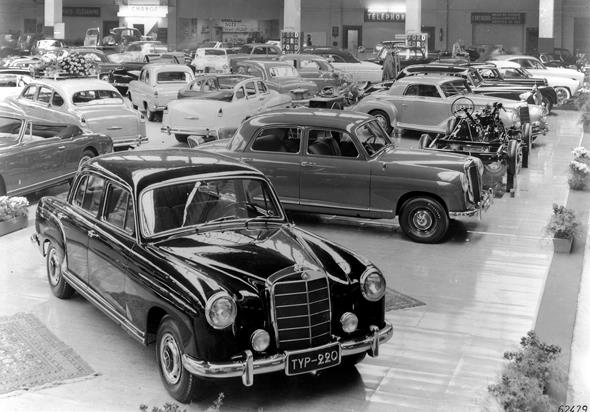
Birth of the S-Class: the luxury-class vehicles of the Mercedes-Benz brand have an enduring tradition which stretches back to the beginning of the last century. The Mercedes-Benz premium models took on the succinct S-Class name with the introduction of the 116 model series in 1972.
However, the brand’s top-of-the-range models had already been carrying the “S” designation as part of their name. In 1956, with the 220 S, the letter “S” became a permanent fixture in the names of the Mercedes-Benz premium-class models, underlining their special, premium status. This marked the start of these classifications, which have remained in place to this day.
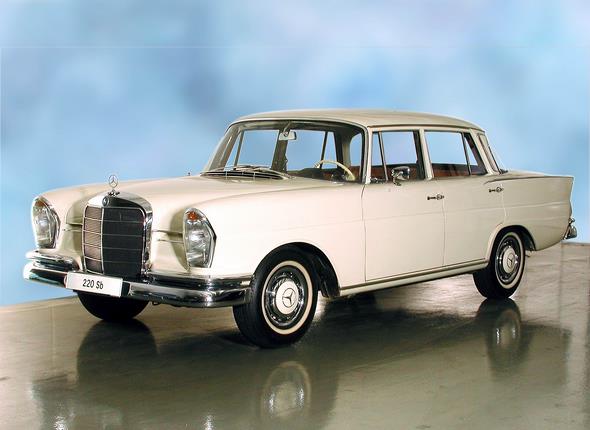
Blazing new trails in drive technology: with each generation of the S-Class, Mercedes-Benz responds to the important issues of the time. One of these is the issue of pioneering drive systems for highly efficient motoring. The year 2009 therefore saw the launch of the S 400 HYBRID as part of the 221 model series – the first luxury-class vehicle to feature a hybrid drive and the world’s first series production passenger car with a lithium-ion battery.
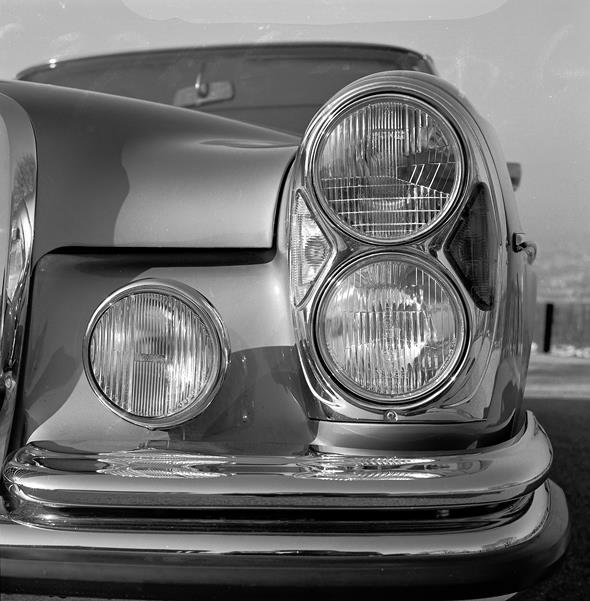
Other models which have pointed the way forward to the future of drive technology include the particularly clean S 350 BlueTEC (2010) diesel Saloon, and the economical yet powerful S 500 BlueEFFICIENCY with direct petrol injection. Also reflecting optimum efficiency is the S 250 CDI (2011), with which Mercedes-Benz introduced a four-cylinder engine into the S-Class for the first time.
The bestseller: in a production period spanning more than twelve years from 1979 to 1992, no less than 818,036 units of the 126 model series were built. As a result, this generation of the S-Class – when measured in terms of unit numbers – proved to be the most successful premium-class model series in the history of Mercedes-Benz.
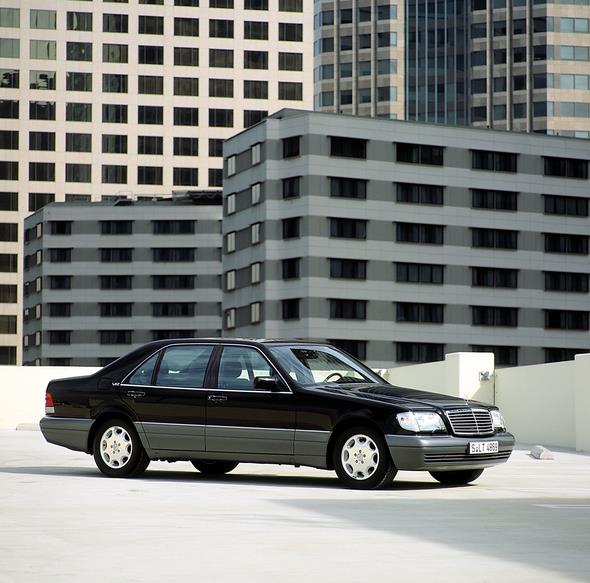
The revolutionary: in its monthly report for February 1968, the Deutsche Bundesbank (Germany’s central bank) saw a “period of economic recovery” developing. Mercedes-Benz delivered the appropriate response in automotive terms in the guise of the 300 SEL 6.3 (W 109), which was launched in March 1968.
Although with a price tag of DM39,160 the flagship saloon was around 2.5 times more expensive than the entry-level premium-class model, the 250 S (W 108, DM15,300), the 300 SEL 6.3 enjoyed outstanding sales with no fewer than 6,526 customers opting for the high-performance saloon. By way of comparison it is worth noting that the average gross salary in 1968 was around DM11,000 per annum.
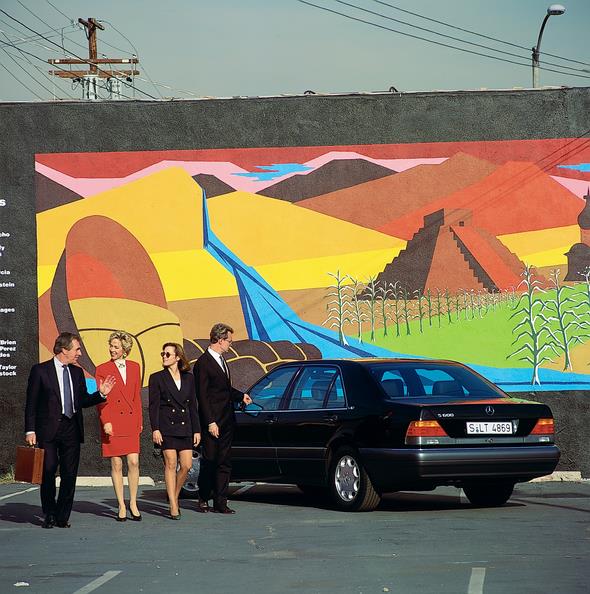
The S-Class as innovator: since the very beginning, many of the technical innovations developed by Mercedes-Benz have been exclusively debuted in the model series of the S-Class, enabling all categories and brands of series production vehicles to benefit from such developments subsequently.
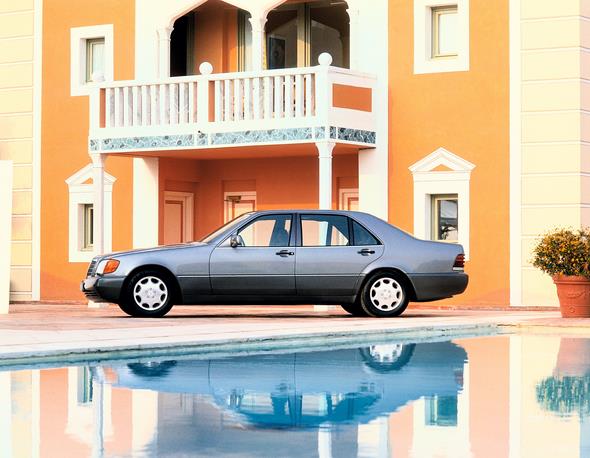
This is especially true of one area in particular: vehicle safety. Here, some of the features launched in the model series of the S-Class by Mercedes-Benz include the safety body (W 111, 1959), the anti-lock braking system ABS (116 model series, 1978), the airbag (126 model series, 1981), and the Electronic Stability Program ESP® (140 model series, 1995).
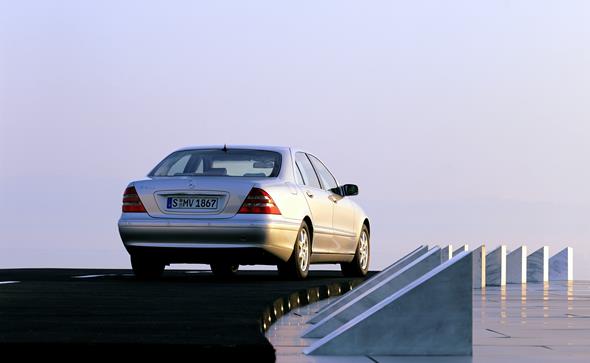
A cosmopolitan make-up thanks to SKD assembly: since the 1950s, Mercedes-Benz has been building passenger cars using completely knocked down (CKD) parts kits in a variety of different international assembly plants. Currently (as at May 2013) S-Class saloons are also assembled in Egypt, India, Indonesia, Malaysia, and Thailand. As part of this, the vehicles arrive from Germany as semi-knocked-down (SKD) parts kits.
The convenience of innovation: from April 1961, an automatic transmission developed in-house by Mercedes-Benz became available as a cost option for the “tailfin” models. In the 300 SE, the top-of-the-line model of the series, it was fitted as standard.
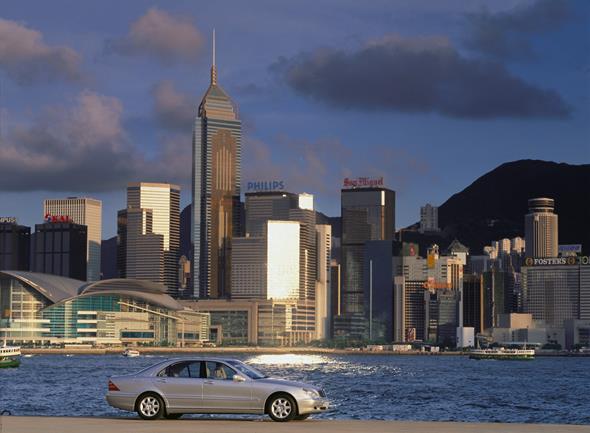
This convenient optional extra cost DM1400 and as such accounted for more than a tenth of the list price of a 220 S model (DM13,750). The export variant of a complete standard Volkswagen, the “Beetle”, could be had from new for almost DM5000 in 1962.
Realignment of the name: in 1993, as part of an alignment of the model designations across all model series, Mercedes-Benz also realigned the name of the S-Class by moving the “S” in front of the three-figure number used to indicate the engine displacement.
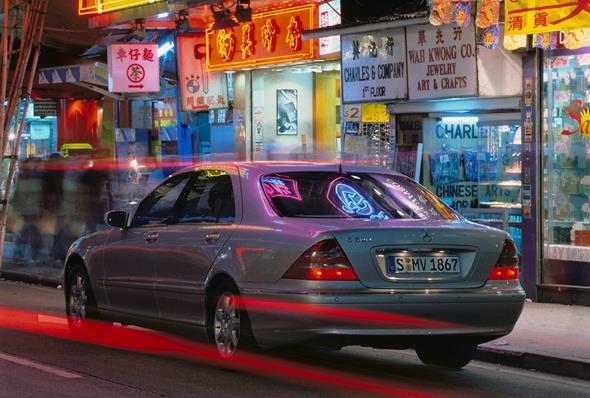
At the same time, details such as the “E” for injection engine (“Einspritzmotor” in German) and “L” for long wheelbase were dropped from the model designation appearing on the boot lid.
For example, the 600 SEL became the S 600 long wheelbase, but in fact only carried the designation S 600. The move to standardise the model designations formed part of the Mercedes-Benz model offensive.
Research in the premium segment: the S-Class has always been at the centre of innovative vehicle technology. This is true of safety, for example, an area in which the 116 model series has served as the basis for the ESF 22 (1973) and ESF 24 (1974) Experimental Safety Vehicles. In 2009, the ESF 2009 vehicle was produced, taking as its basis an S 400 HYBRID from the 221 model series.
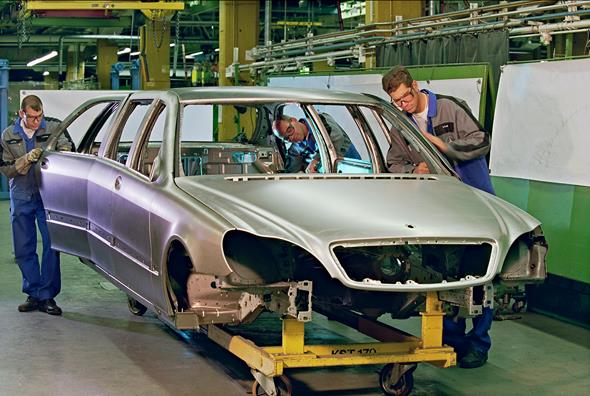
Refined strengths: the 600 model (W 100) launched in 1963 was the first passenger car from Mercedes-Benz with a V8 injection engine. From 1967 this engine, which was as equally powerful (184 kW/250 hp) as it was refined, also powered the W 109 model series (in the flagship model 300 SEL 6.3).
Other top-of-the-line V8 engines were used in the 450 SEL 6.9 from the 116 model series (210 kW/286 hp) and the 560 SE from the 126 model series (220 kW/300 hp, ECE variant). In 1991, the first standard-fit twelve-cylinder engine made its debut in a Mercedes-Benz passenger car, namely the 600 SE from the 140 model series.
The M 120 generated 300 kW (408 hp) from a displacement of 6 litres, and established a tradition of deploying V12 engines as top-of-the-line variants in the S-Class.
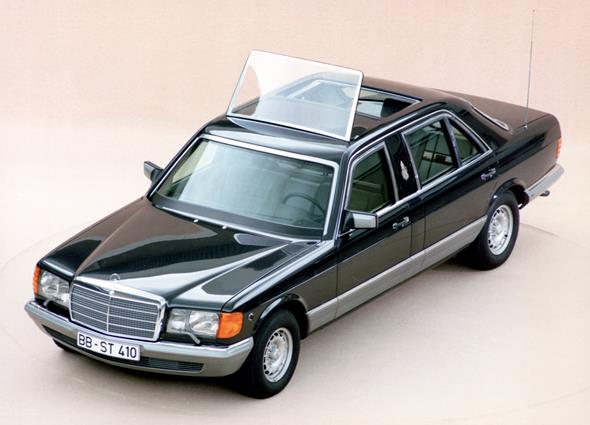
Since the introduction of the 220 model series, Mercedes-Benz has also offered exceptionally sporty top-of-the-line versions with V8 and V12 engines of the S-Class, optimised by AMG, in the form of the S 63 AMG and S 65 AMG.
Special protection in the special class: Mercedes-Benz began been producing luxury vehicles offering special protection against attack and designed for high-ranking customers from as early as the first half of the 20th century.
In 1965, the armoured Mercedes-Benz 600 Pullman revived this tradition once again. Subsequently, in 1971 the 280 SEL 3.5 (W 108) was produced as a special protection variant of the S-Class for high-risk overseas representatives of the Federal Republic of Germany.
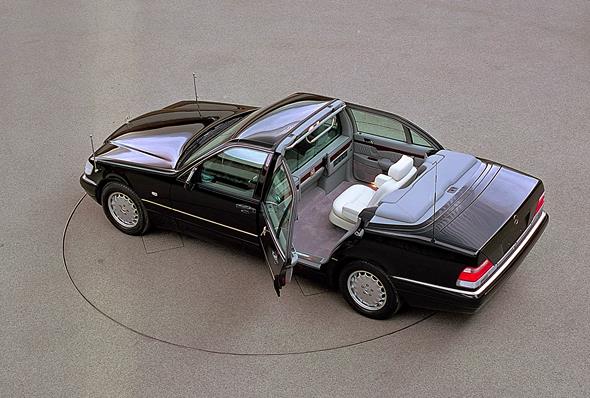
From 1978, four different special protection models were produced as part of the 116 model series. Mercedes-Benz offered seven variants of the 126 model series S-Class with integrated special protection, and a total of 1,465 examples were built with armour plating.
Since 1999, the special protection vehicles of the S-Class have been produced under the name S-Guard, featuring high-protection or the highest-protection levels (armouring classes B4 up to B7).
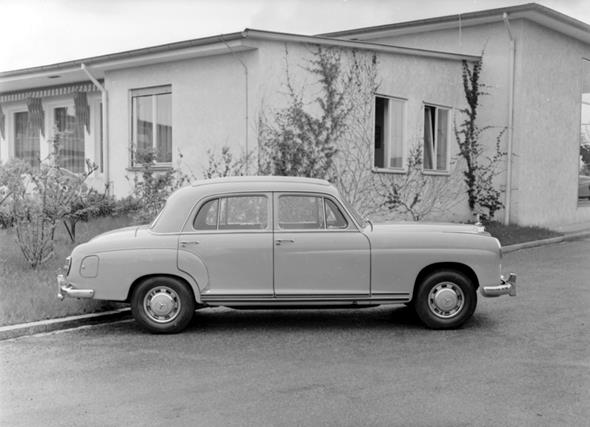
Trailblazing diesel: the compression-ignition engine also found its way into the premium and luxury class via the Mercedes-Benz S-Class. The Stuttgart-based brand made it clear at an early stage that environmentally friendly, efficient drives and prestige cars can be a good combination.
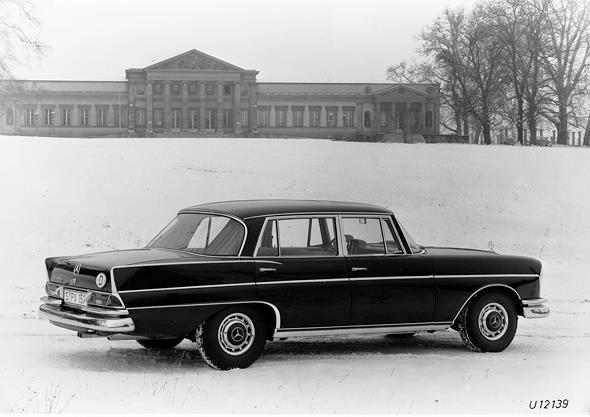
This started in 1977 with the launch of the 300 SD from the 116 model series, produced as an export model for the North American market. With a 3-litre five-cylinder engine and turbocharger, the Saloon made a contribution to reducing fleet fuel consumption – calculated on the basis of the average fuel consumption of all of the models of a particular brand.
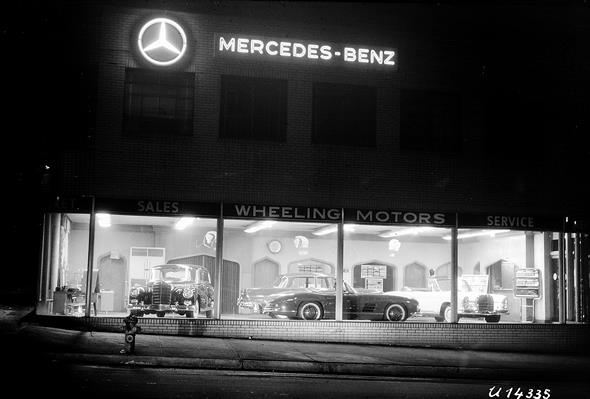
At the same time, the luxury diesel was the first series production passenger car with a turbodiesel engine. The 300 SD Turbodiesel (126 model series, 1980) was designed exclusively for export to North America. It was not until 1992 that the 300 SD, from the 140 model series, with six-cylinder engine (available from June 1993 as the S 350 Turbodiesel) also became available in Europe.
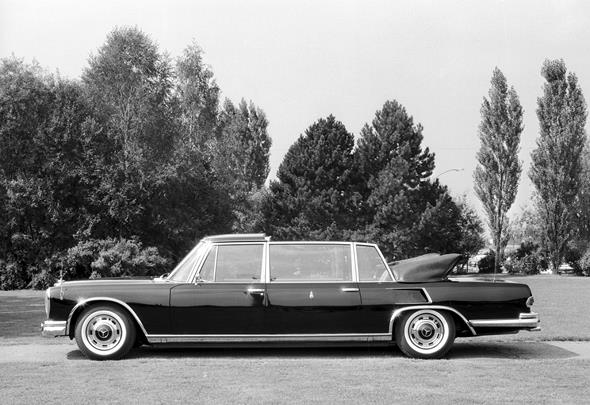
Diesel technology also resulted in the first four-cylinder being introduced in an S-Class model for series production. The engine was fitted to the S 250 CDI from the 221 model series which was launched in 2010.
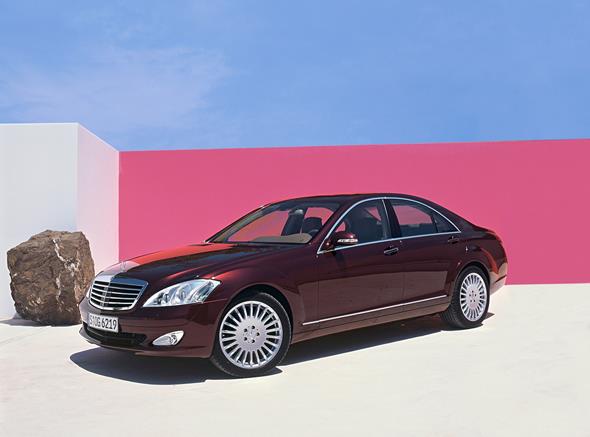
Sporting tradition: in the world of motor sport in the 1960s, Mercedes-Benz set standards with its premium-class saloons from the W 111/112 model series, both in rallies and endurance races.
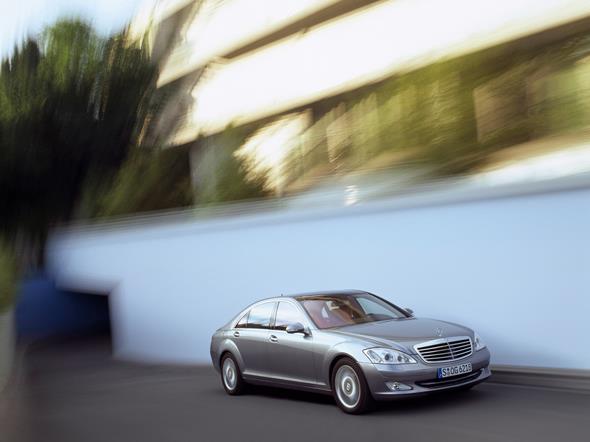
Then in 1968, the 300 SEL 6.3 (W 109) made its debut with the V8 engine from the 600 model – this vehicle achieved a level of performance which exceeded even that of top-of-the-line sports cars. In 1971, it gave rise to the powerful 315 kW (428 hp) 300 SEL 6.8 AMG, with which Hans Heyer and Clemens Schickentanz achieved a classic victory at the 24-hour race at Spa, securing them second place in the overall rankings.
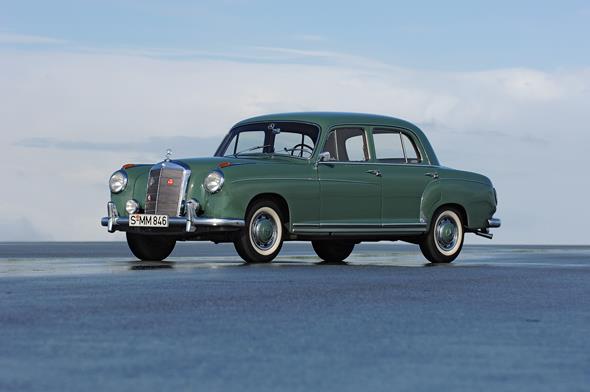
Exclusive format: state limousines and prestige saloons have been a key theme of the history of the S-Class. In the 1950s, such roles were played by the Mercedes-Benz 300 (W 186/189) – also known as the “Adenauer” Mercedes – and from 1963 to 1981 by the 600 model (W 100).
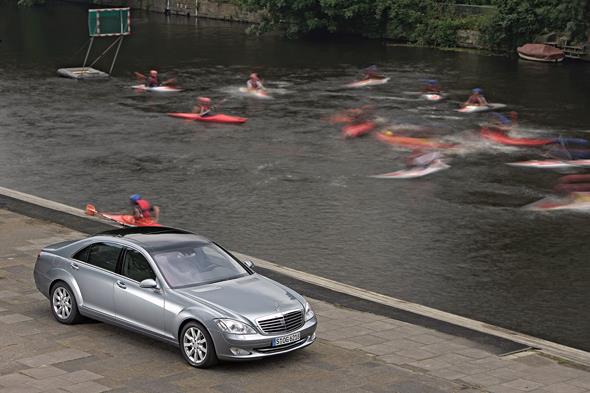
Mercedes-Benz continued the tradition of such vehicles with the Pullman Saloon from the 140 model series, which initially appeared in 1995 as a state saloon in the guise of the S 600 Pullman featuring special protection technology.
The vehicle’s wheelbase was 100 cm longer than the long version (V 140). Mercedes-Benz also offered Pullman variants of the 220 and 221 model series with special protection features.
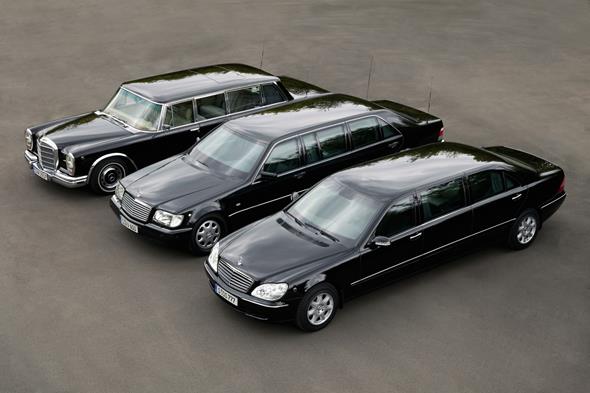
The Pope and the S-Class: Mercedes-Benz and the Vatican have had a close relationship since the Stuttgart-based brand gave a Nürburg 460 Pullman Saloon to Pope Pius XI as a gift in 1930. It was to become the first car which a Pope made use of on a regular basis.
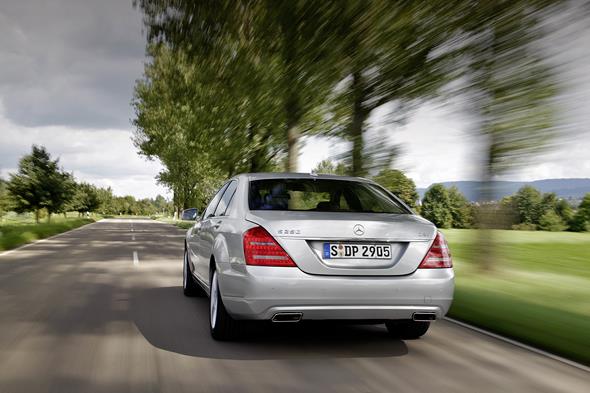
After the Second World War, the Nürburg model was replaced in 1960 by a 300 d Landaulet (W 189) with extended wheelbase, and in 1965 this was followed by an exclusive 600 model Landaulet (W 100) with widened rear doors, raised roof, and level floor in the rear accommodating the Pope’s individual chair.
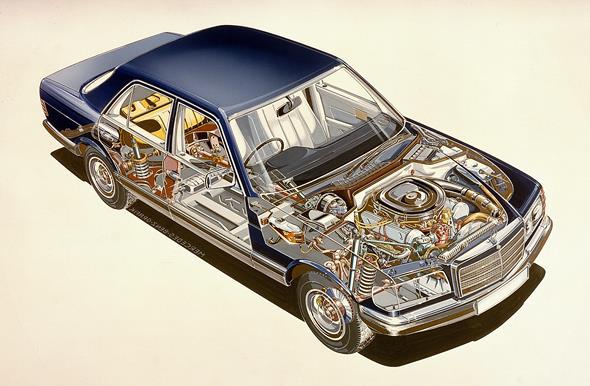
In 1966, another Landaulet with individual chair was produced, based on a 300 SEL (W 109), and in the following year came two Pullman Saloons from the 109 model series featuring a wheelbase extended by a further 650 mm.
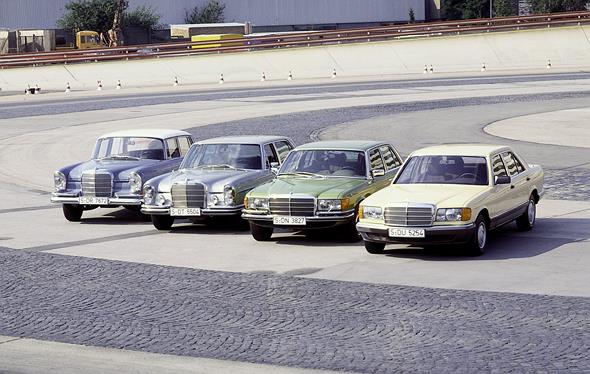
The years which followed saw further vehicles for His Holiness in the guise of the S-Class 126 model series (500 SEL Saloon with extended wheelbase and raised roof, as a special protection variant, 1985) and 140 model series (Landaulet with electrohydraulic soft top, 1997). Also extremely famous are the “Popemobiles” which have been based on the G- and M-Class.
